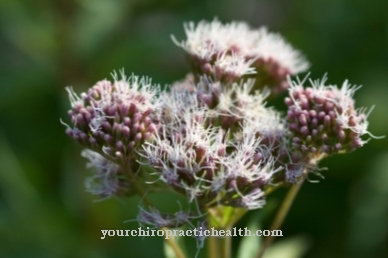Occurrence and cultivation of the common hazel root
The Common hazel root is an evergreen and herbaceous plant that grows persistently and can reach heights of five to ten centimeters. The plant forms a so-called rhizome, which acts as a persistence organ. The upper parts of the plant of the common hazel root are slightly hairy.
All parts of the plant give off an intense smell. The rhizome, for example, is reminiscent of pepper in its scent. The shoot axes grow creeping on the ground and form some lower leaves that are brownish to green in color. In addition, the common hazel root always has two evergreen leaves with long stems. In many cases, their leaf blades are heart-shaped or kidney-shaped with a glossy top and hairy underside.
The flowers of the common hazel root stand directly on the ground and have a jug-like shape. Their color is mostly brownish red, they also have three characteristic lobes. The flowers also have a strong smell of pepper. The flowers of the common hazel root are able to pollinate themselves. However, cross-pollination is also possible, which often takes place via insects.
In the flower there is a strong stylus column, which consists of several individual styluses that have grown together. While the flower is female at first, it develops into a male flower over time. Then it opens completely and the so-called perigone lobes bend outwards. In addition, the flowers of the common hazel root imitate certain characteristics of mushrooms, which attracts fungus mosquitoes.
These play an important role in the pollination of the flowers. The flowering period extends from the end of March to May. The common hazel root occurs in Eurasia and thrives in deciduous forests on calcareous and humid locations.
Effect & application
Basically, when using the common hazel root for medicinal purposes, it should be noted that it is a poisonous plant. Due to its toxicity, it is no longer used in folk medicine today. Only in homeopathy is the common hazel root sometimes still used. However, it applies here that it may only be taken in sufficiently diluted potencies.
The common hazel root can be used as a homeopathic preparation, whereby the potency must be at least D3 or higher. The preferred form of administration for the active ingredients of common hazel root are the globules typical in homeopathy, which are swallowed with a little water. Ordinary hazel root should not be consumed in any other way.
In particular, raw or dried parts of the plant must never be consumed. Taken as a homeopathic remedy, the common hazel root can be used, for example, for colds, coughing problems and problems of the gastrointestinal tract. It can also provide relief from an irritable stomach. The corresponding preparations are traded under the name Asarum.
If parts of the common hazel root are eaten, severe symptoms of poisoning can occur. The roots and leaves of the plant have a peppery taste. The rhizome has essential and camphor-like ingredients that irritate the mucous membranes and lead to internal bleeding.
Importance for health, treatment & prevention
The use of common hazel root in medicine has a long tradition. In the 18th century, for example, the plant was often used as an emetic, when the dried rhizomes were used. They were also pulverized and mixed into a special snuff. The rhizomes were mainly collected and dried in August. However, medical use of the rhizome is strongly discouraged today.
The substances contained can cause significant symptoms of intoxication and impair health. Not only the rhizome, but the entire plant is poisonous. It contains, for example, essential oil and the toxin asarone. This is contained in the plant in variable amounts and leads to a number of symptoms.
Typical symptoms of poisoning from the consumption of the common hazel root include a burning sensation in the mouth and throat, as well as nausea, stomach pain and vomiting. The oral mucosa and the tongue are numbed. In particularly severe cases, gastroenteritis with severe diarrhea can occur. Uterine bleeding can also occur because the plant contains substances that promote bleeding.
In the worst case, central respiratory paralysis and, as a result, death can occur. Particularly when the rhizome is chewed, the tongue and oral cavity can be numbed. Special phenylpropane derivatives are responsible for this, especially the so-called trans-isoasarone and the trans-isoeugenol methyl ester. The nausea caused by the consumption of parts of the common hazel root is due to the essential oil.
In earlier times, common hazel root was used, for example, in veterinary medicine, but also for hair care. To do this, it was mixed with water and applied to the hair. The consumption of common hazel root in connection with vinegar has also been described, which should cleanse the head.
























.jpg)



